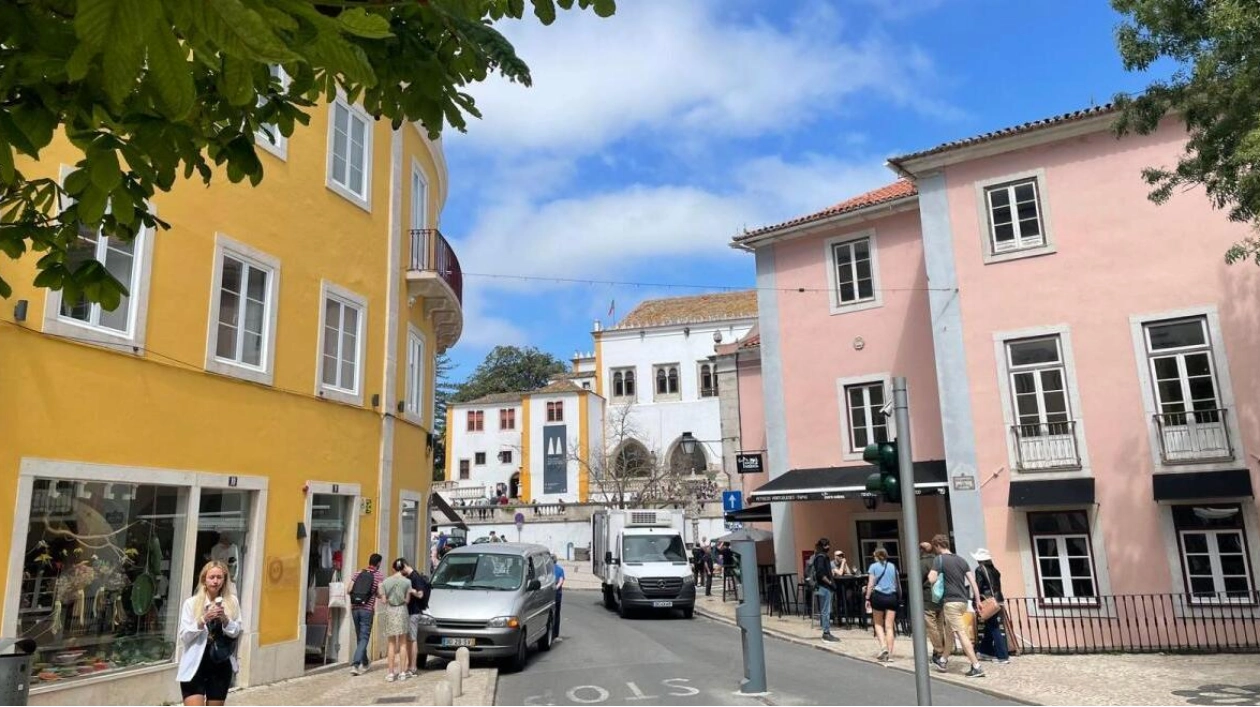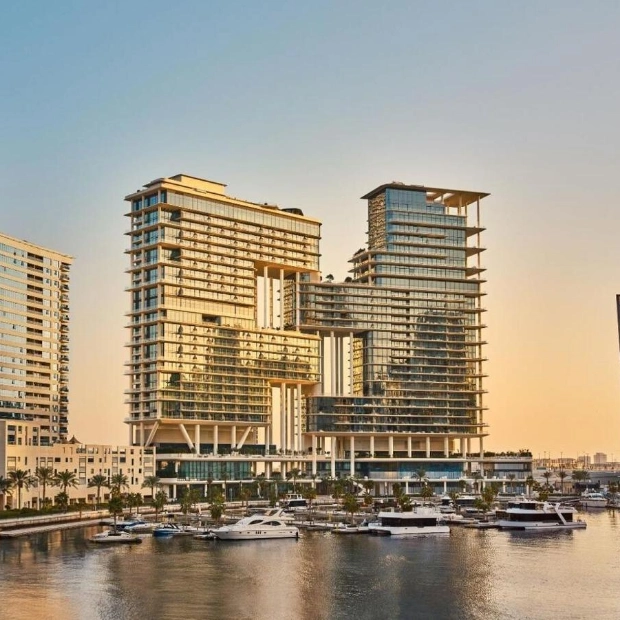On a sunny morning, a crowded train from Lisbon, Portugal, transported me to Sintra, a captivating small city nestled in the Serra de Sintra hills, renowned for its palaces, fairytale castles, castle ruins, water fountains, and villas that once belonged to royalty and aristocracy. The train's full capacity indicated Sintra's popularity, a notion reinforced when it took me ten minutes just to leave the station, causing me to miss the shuttle bus. Luckily, I had a timed entry ticket for Pena Palace, Sintra’s main attraction, at 10:15 am, allowing me ample time to explore a few spots before my visit. This was thanks to my taxi driver, Alfonso, an Argentinean immigrant, who was not only a great conversationalist but also knew the best scenic spots in the city.
Alfonso shared insights about the celebrities residing in Sintra and the significance of the city's water fountains. We stopped at the ancient yet popular Sabuga Water Fountain, distinguished by its ornately designed gable topped with a yellow sun. The water was reputed to be magical, evident by the crowd filling their containers. Alfonso clarified, “It’s excellent for gastrointestinal issues,” as he filled his bottle, and I did the same. The fountain, mentioned in 14th-century literature, was rebuilt in the 18th century after the original was destroyed in the 1755 earthquake. I filled my bottle as a precaution, considering the paella I planned to enjoy later.
Legend has it that drinking Sabuga's water ensures Sintra is never forgotten. While I'm unsure about that claim, I know I won't forget Sintra soon. We then drove uphill to the Biester Palace, recently opened to the public after restoration. Unfortunately, its grand library was closed, but the security guard kindly let me tour the gardens. Next, it was time for Pena Palace.
Alfonso dropped me at the entrance. Pena Palace, with its vibrant red and yellow walls, staircases, turrets, and balconies, resembled a lively fairytale castle. The exterior featured impressive stone carvings, and the entrance was marked by a statue of Triton. Inside, the palace boasted several opulent staterooms and was designated a UNESCO World Heritage Site in 1995. It's the most famous of Sintra's palaces and rightly so, inspiring King Ludwig II's Neuschwanstein Castle and, subsequently, Walt Disney's Disneyland castle. Originally a monastery in the 12th century, it was transformed into a royal palace in the mid-19th century and remained so until Portugal became a republic in 1905. Each successive monarch added their unique touch, making Pena Palace the epitome of Portuguese romanticism, influenced by medieval Catholic, Islamic, and Greek mythology.
After two hours, I left Pena Palace, feeling both fulfilled and like I had missed out on much. The surrounding lush forests beckoned, but time was limited. A bus soon arrived for the return trip, and I boarded, no longer keen on hiking downhill. As the bus navigated the forested roads back to the city center, it was clear why Sintra charmed not only Walt Disney but also British secret agents, as seen in 'On Her Majesty’s Secret Service.' The city center was bustling, but I found a spot at Romaria de Baco, recommended by Alfonso, and savored traditional Portuguese lunch followed by Sintra’s famous cheese and cinnamon tarts from Queijadas da Sapa, in business since 1756.
Live music played somewhere, adding to Sintra's unique charm. The architecture, winding alleyways, and uplifting vibe make it worthwhile, even without its castles and palaces. I was thrilled to find a working telephone booth near the National Palace and, fulfilling a childhood dream, made a call, surprised to find it operational. After lunch, I visited the National Palace, a massive structure with two large conical chimneys. Though less flamboyant than Pena Palace, it is one of the best-preserved medieval royal palaces in the country, hosting nearly every Portuguese king and queen, each leaving their mark.
Sintra, whether explored for a day or longer, is one of Portugal's most beautiful cities, despite its size, hiding architectural wonders. My day concluded with a brief visit to Quinta de Regaleira, accessible via bus route 435. A quick walk through old blue and yellow buildings and tall trees led me to its Gothic house and extensive gardens. The highlight was the Initiation Well, symbolizing ancient secret orders like the Knights Templar and the Masons. I descended the spiral stairwell carefully to avoid dizziness and exited through a tunnel, a fitting end to a packed day.






